
With Zhang Zikang as the curator, “Dove Dance: An Exhibition of Works by Artist Hurxida Kerim” was presented from 10 October through to 20 October, 2021 at Soka Art in Beijing. This exhibition showcased 30 paintings by Hurxida Kerim from the last twenty years covering three periods. Hurxida Kerim’s unique life experiences have given her nurture and influence from different cultures. As a result, her works present a unique artistic perspective and diverse ideological connotations while embracing the richness of ethnic culture and realistic expression.
Her representative works can be roughly divided into three periods since 2001: “Yengisar”, “Etles Silk” and “Silence” which she created before and after she studied at Ecole Nationale Superieure des Beaux-Arts; “Dove” she created while she was a PhD. candidate at China Central Academy of Fine Arts and she has conducted research on the ethic life and mural paintings at Kizil Grottes in Xinjiang; her recent works have become more diversified as portraits, landscapes and still life have all become her subjects such as “Floating Cloud”, “Tianshan Snow” and “Red Rock”.
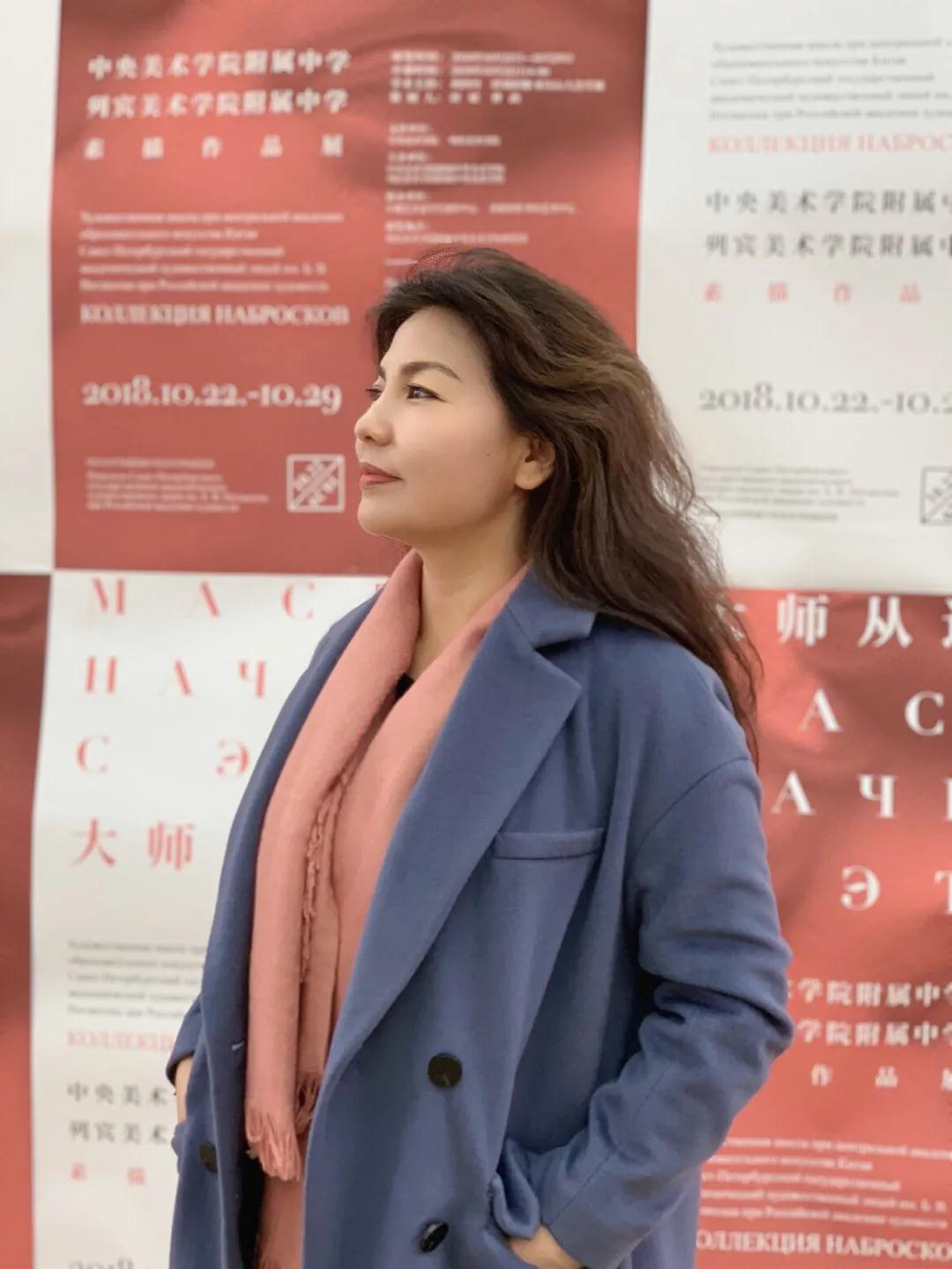
Artist Hurxida Kerim
Hurxida Kerim was born in Xinjiang and she was trained by her father, Abuduklim Nasding from an early age, he offered her an enlightenment for art, and his artistic ideas profoundly influenced her. She is a gifted artist with a quick mind, and has been educated and nurtured through her studies and work experience. In 2004, she went to Ecole Nationale Superieure des Beaux-Arts as a visiting scholar and she learned from Abraham Pincas. “My visit in Paris exerted a great influence on me,” said Hurxida, “Whether from the direction of painting, or the inspiration from life, this led to a new altitude.” She continued her PhD. study supervised by Prof. Zhu Naizheng at China Central Academy of Fine Arts in 2007 and then engaged in the research on the freehand nature of Chinese oil painting. She transforms the decorative flavours and expressions of ethnic characters into profound connotations of the artist’s images and refines them into a more contemporary style. This artistic expression opens a new visual experience of expression and exploration. Viewers can learn about the artist’s creative journey through these artworks and gain a multicultural and multi-dimensional emotional experience.
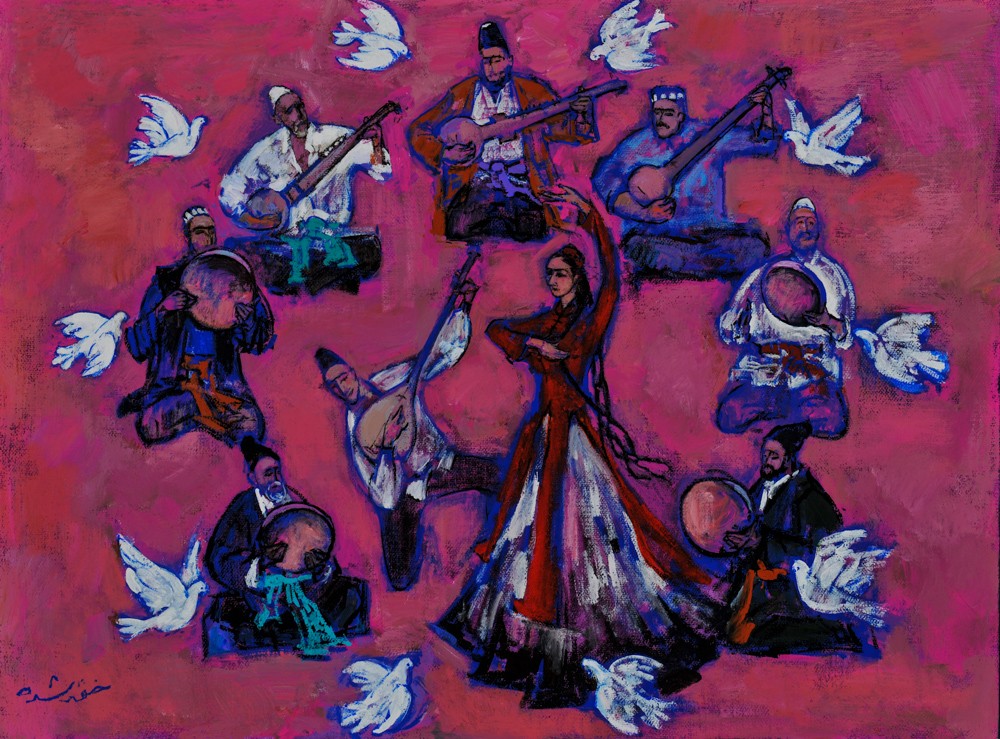
Dove Dance, Oil on canvas, 130×162cm, 2015
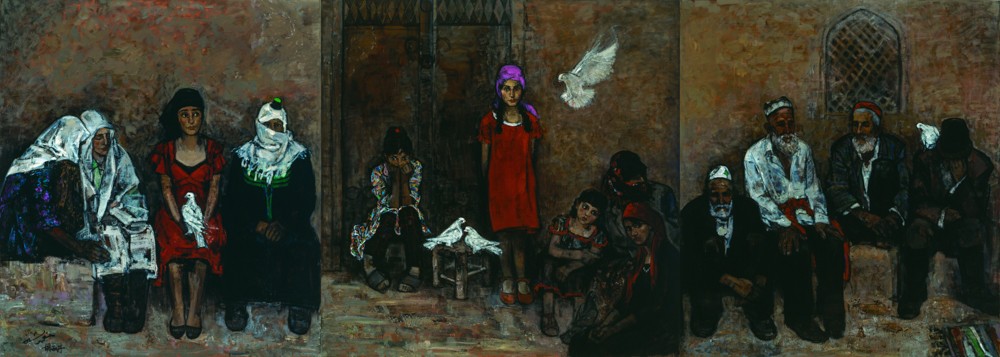
Dove, Oil on canvas, 180×500cm, 2010
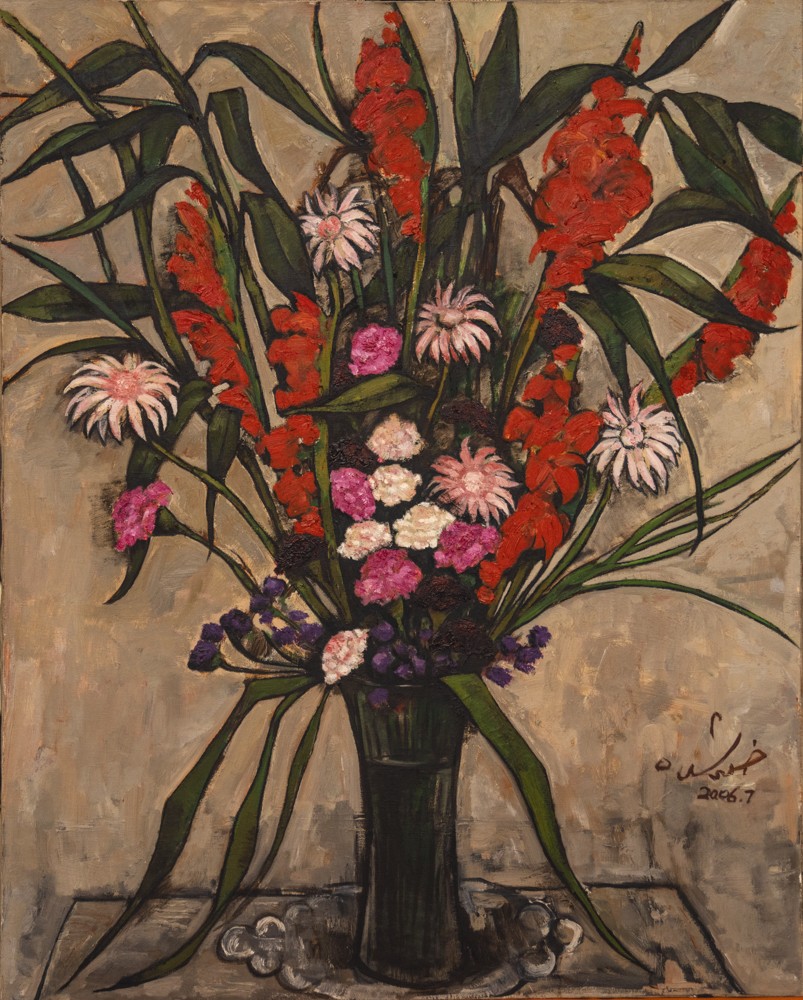
Disguise No. 1, Oil on canvas, 100×80cm, 2006
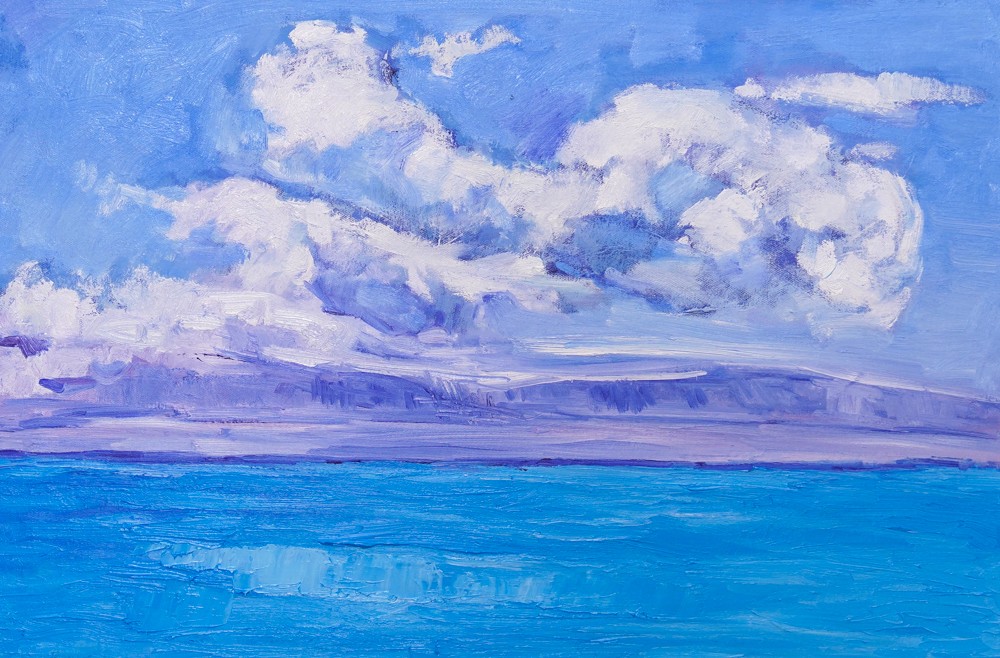
Floating Cloud, Oil on canvas, 60×90cm, 2021
Her representative work “Dove”, is composed of a triptych canvas spread horizontally—the artwork presents a dramatic emotional connection to the background. This painting depicts three groups of people of different ages, clothing, and character traits. It is clear that the hard contour lines create a classicized depiction of the figure in this artwork. Also, the use of white and several shades of red both emphasize the national character and fully demonstrate the artist's overall handling in terms of the effect of artistic expression.

Jin Shangyi, Honorary Chairman of China Artists Association and former President of China Central Academy of Fine Arts
Jin Shangyi, Honorary Chairman of China Artists Association and former President of China Central Academy of Fine Arts stated that, Hurxida Kerim was a very talented female artist and her paintings are endowed with strong ethnic characteristics with rough lines and strong colors of Xinjiang which excel in the field of oil painting.

Fan Di’an, Chairman of China Artists Association and President of China Central Academy of Fine Arts
Fan Di’an, Chairman of China Artists Association and President of China Central Academy of Fine Arts, mentioned in his speech that, Hurxida Kerim has absorbed various nourishment on her path of learning art including research of cultural and art resources of western China in Northwestern Normal University, her learning from art in the West after she went to study in Paris, and more importantly her experience in Central Academy of Fine Arts while supervising by Zhu Naizheng, all endowed her with beneficial influences and further encouraged her to form her solid ideal in art. What’s more significant was that she regarded this solo exhibition as a form of public interest activity, as she donated all the income of this exhibition towards financial aid to students in western China. Such a spiritual connection reflected the pursuit of Hurxida Kerim in art. We can sense the soaring mentality in the “Dance of the Dove” as well as her devotion to art education in the High School Affiliated to CAFA and dedication to public welfare activities.

Sun Jingbo, Professor of Central Academy of Fine Arts
Sun Jingbo, Professor of Central Academy of Fine Arts, expressed his sincere congratulations on Hurxida Kerim’s first solo exhibition from his own experience as a student from the High School Affiliated to CAFA, a classmate of Abuduklim Nasding, a colleague of Professor Zhu Naizheng. He mentioned that as the first Uygur artist that has acquired a PhD. in Art in China Central Academy of Fine Arts, she is the pride of Central Academy of Fine Arts and Uygur in Xinjiang. The unique life experiences of Hurxida Kerim have offered her influences from various cultures. As a result, her works have a unique artistic perspective and diverse ideological connotations: both rich in ethnic culture and realistic expression.
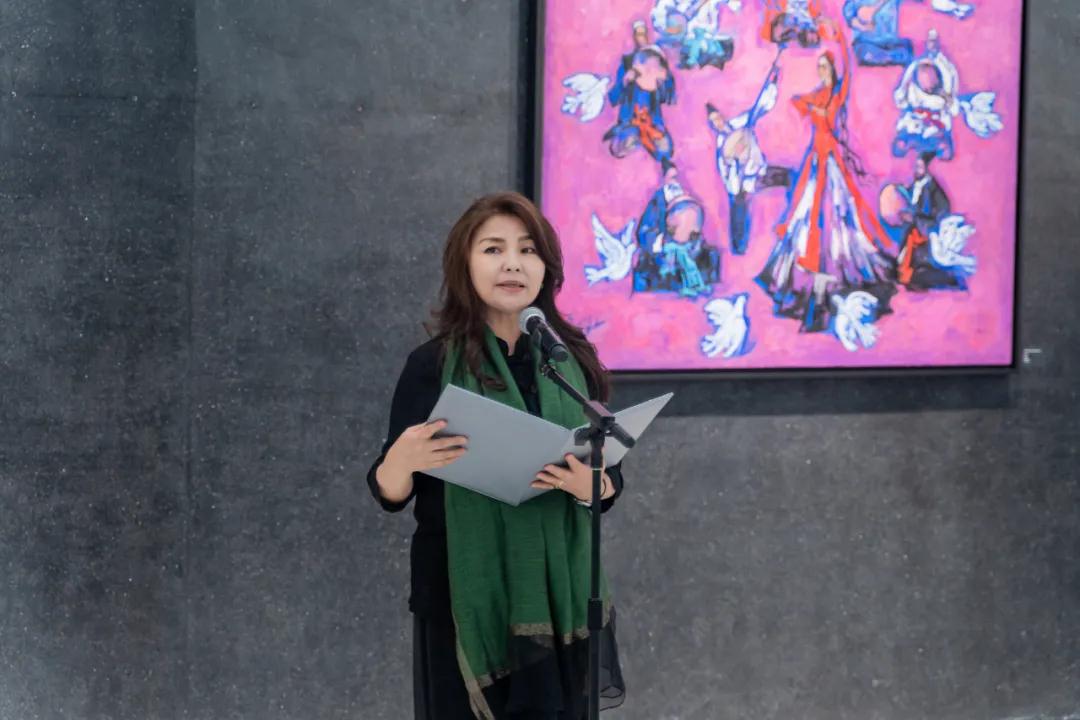
Artist Hurxida Kerim, Principal of the High School Affiliated to CAFA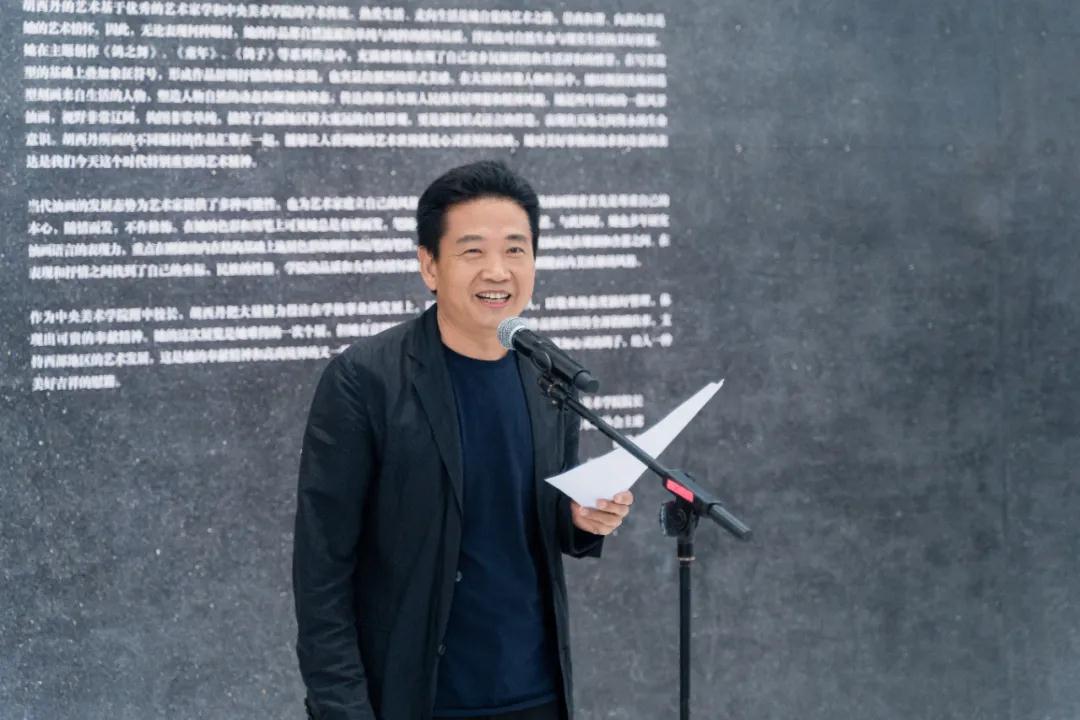 Curator Zhang Zikang, Director of CAFA Art Museum, hosted the opening ceremony.
Curator Zhang Zikang, Director of CAFA Art Museum, hosted the opening ceremony.
Interview with Hurxida Kerim
CAFA ART INFO: Would you share with us the origin of this exhibition?
Hurxida Kerim: The original intention of this exhibition started from my sincere hope that I can contribute to art, research in western China and further promote development in art education there. With a deep love for the mountains, rivers, flowers, trees in my hometown as well as the people living there, I am so grateful to all of them. Thanks to the curatorial work of Zhang Zikang, Director of CAFA Art Museum, this exhibition can be successfully held.
CAFA ART INFO: What does “dove” mean in your work and how do you interpret “Dove Dance”?
Hurxida Kerim: In the history of visual art, the image of dove is often depicted to represent the incarnation of holy spirit, as it stands for sanctity. Dove is a symbol that often occurs in my paintings. Dove for me represents peace and tranquility. Being an artist from Xinjiang, I have experienced ethnic union, a stable development in Xinjiang and the fact that the living quality there has been greatly improved. The title of “Dove Dance” reflects what I pursuit in my heart, my love for my hometown and country as well as my best wishes for the world!

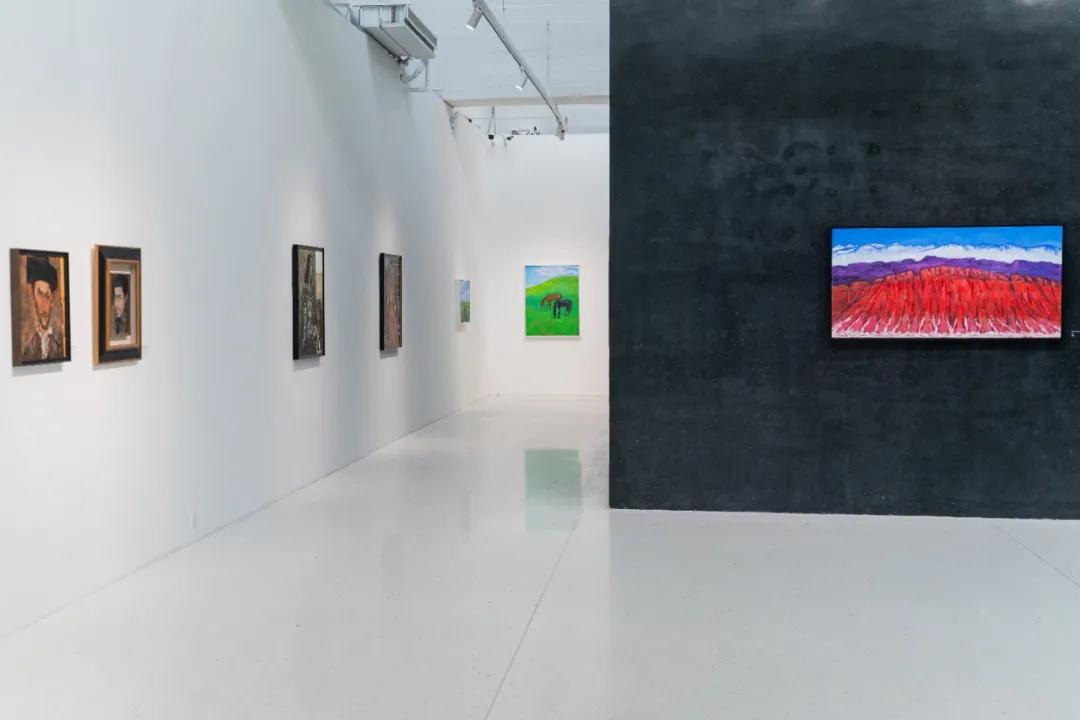

Exhibition View
CAFA ART INFO: This exhibition presents 30 creations of your oil paintings over nearly two decades since 2001, reviewing your creative process and stages, why did you choose 2001 as a dividing line, and how did the exhibition sort out your creative process and stages of creation?
Hurxida Kerim: Soka Art was established in 2001. The works displayed this time can be roughly divided into three stages: first of all, “Yengisar”, “Etles Silk”,“Silence”, “Return from Paris”, “Nude”, that I created before and after I studied at Ecole Nationale Superieure des Beaux-Arts, I focused on the decorative nature of painting and I preferred the method of western modernist painting; the second period was “Dove” I created while I was a PhD. candidate at China Central Academy of Fine Arts and I have conducted research on the mural paintings in Xinjiang; thirdly, my recent works have become more diversified as portraits, landscapes and still life have all become my subjects such as in “Floating Cloud”, “Tianshan Snow” and “Red Rock”, I reduced the dark tone in the image and weakened the contour lines.
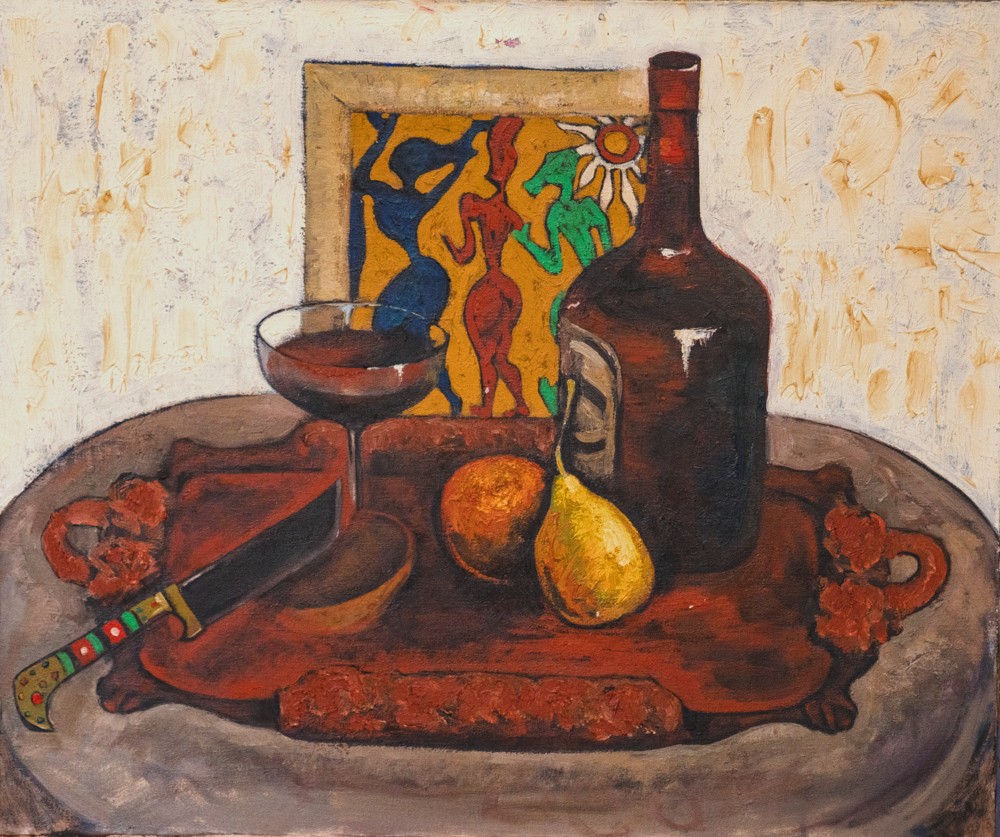
Yengisar, Oil on canvas, 54×65cm, 2001
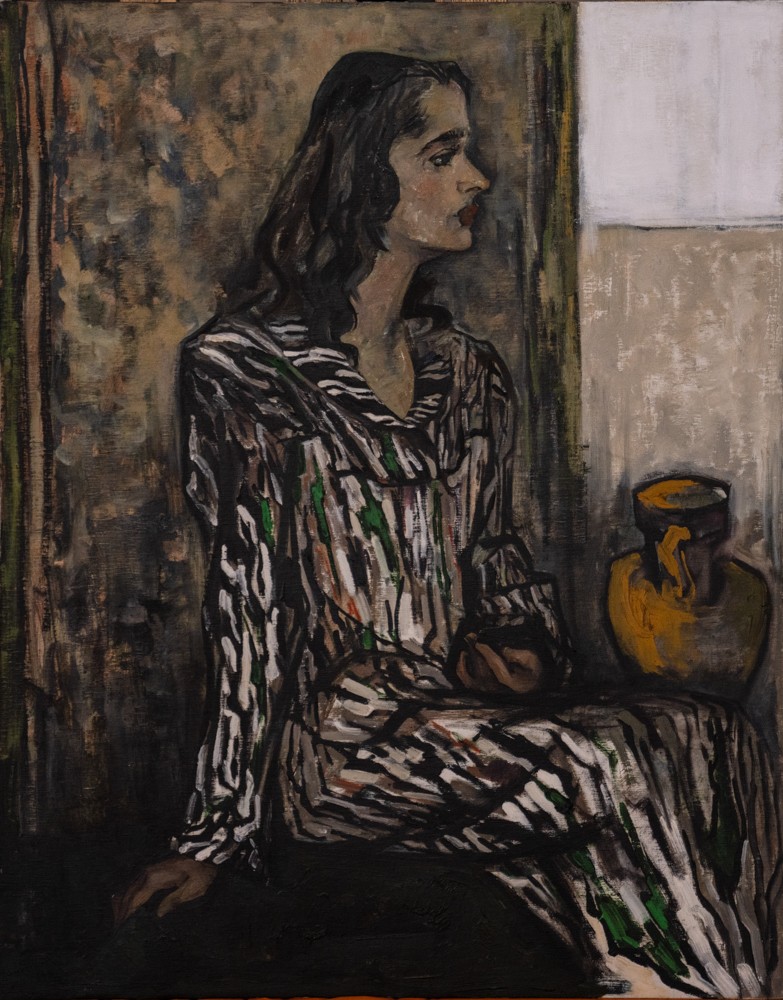
Etles Silk, Oil on canvas, 92×73cm, 2002

Return from Paris, Oil on canvas, 95×75cm, 2004
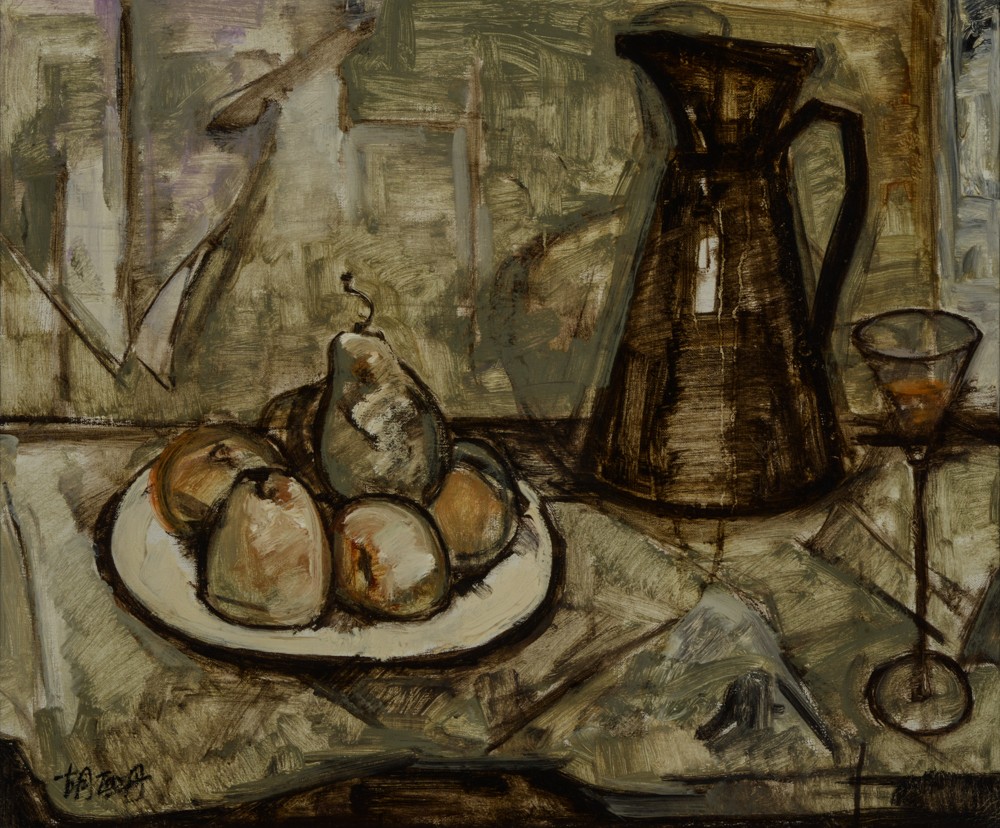
Harmony, Oil on canvas, 50×60cm, 2006

Tianshan Snow, Oil on canvas, 80×160cm, 2021
CAFA ART INFO: Most of your works center around the theme of hometown, could you talk about your feeling for your hometown and how have you transformed it into your artistic expression?
Hurxida Kerim: The hometown is a dreamy place in everyone’s heart. No matter where we are, it is the habitat and constant coordinates of our souls. In my mind, Xinjiang is a vast and beautiful territory, a treasure of energy and resources, a fortress in the northwestern frontier of our motherland, the birthplace of civilization in the Western Regions, and a shining pearl. Only when we arrived in Xinjiang did we realize that the sky and the earth are endless, like beautiful oil paintings: vast deserts, magnificent snow-capped mountains, beautiful grasslands, green lakes, magical Yadan landforms, shocking Populus euphratica forests, countless ruins, precious Buddhist grottes, sweet fruits, special customs and national delicacies are diverse, tolerant, mysterious, romantic, and fascinating. Xinjiang is like the mother in my mind, she is as tall as Kunlun Mountain, as wide as Bosten Lake, and as majestic as the vast Gobi Desert.
Xinjiang has provided me with inexhaustible creative inspiration. Most of the works in this exhibition are based on Xinjiang themes. Whether it is thematic creation or the sketches of characters and landscapes, they all have strong regional characteristics. This is the place where I have lived for many years, and the familiar scenes strengthen the affection for my hometown in my heart. Only in this way can we truly establish a bridge of spiritual communication with the audience. In terms of technique and language, the ancient grottoes in Xinjiang have inspired me a lot: the graphic composition is unrestrained and free, the sense of form is extremely strong, and it reflects the unique decorative style; the expressive features are refined and processed; the expressive power of lines is emphasized as they are chic and straight, endowed with a sense of rhythm and appeal; the use of deep colors, contrasting colors or adjacent colors combined with each other produce a regular arrangement with extremely harmonious beauty. These characteristics have been incorporated into the expression of my oil paintings and have become one of my distinctive personal styles.
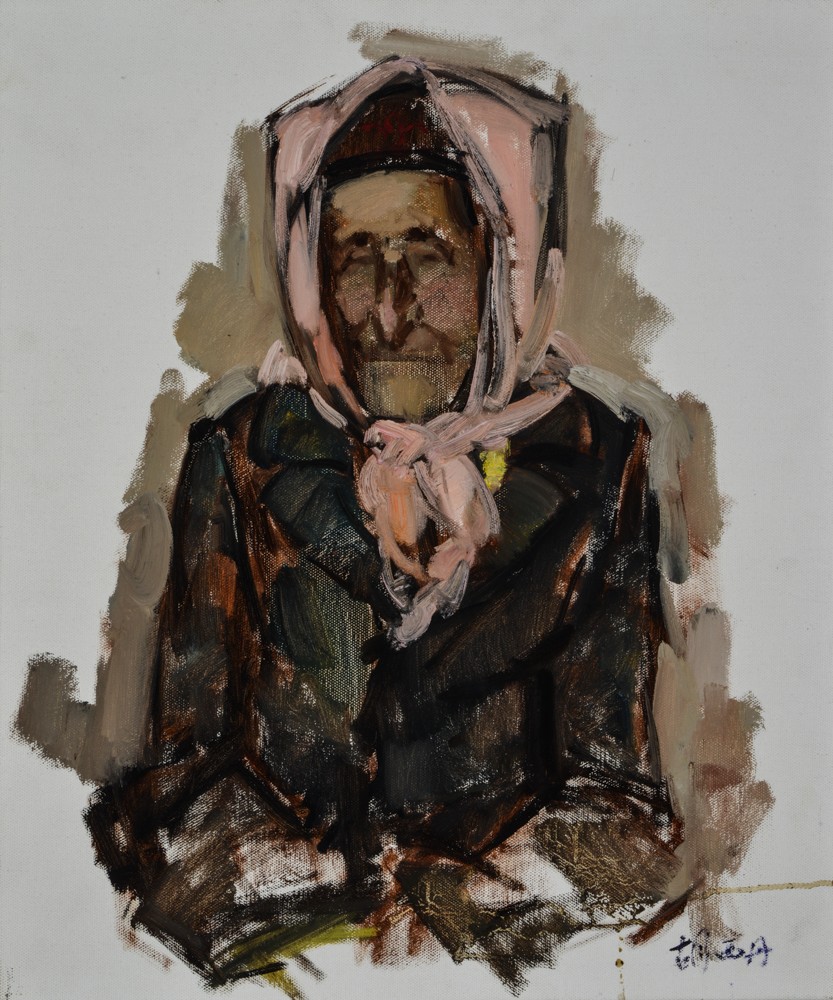
Taxkorgan, Oil on canvas, 60×50cm, 2017
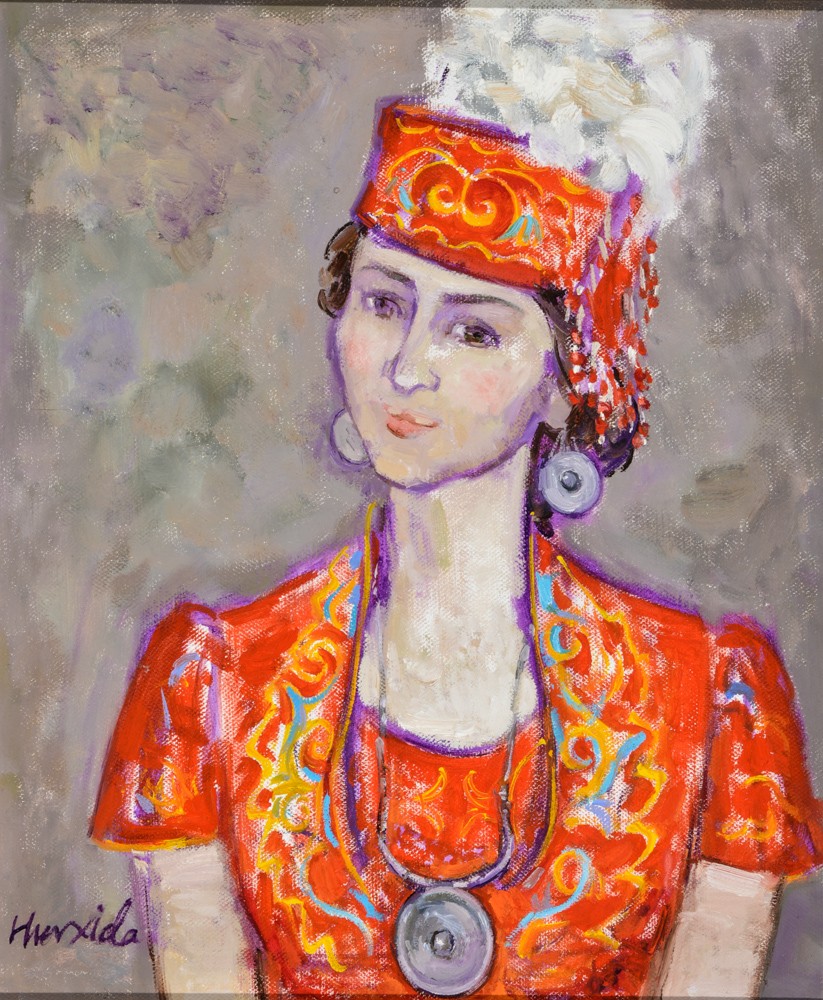
Youth, Oil on canvas, 60×50cm, 2017

Nuwangrida, Oil on canvas, 80×100cm, 2021

Desert & Populus, Oil on canvas, 80×100cm, 2021
CAFA ART INFO: Your father is a renowned master of painting. At the opening ceremony of the exhibition, Prof. Jin Shangyi talked about “his daughter having inherited his advantages and further developed them.” How do you understand the “inheritance” and “development” mentioned by Prof. Jin? Can you tell us about your artistic enlightenment and who has influenced your art or artistic thought?
Hurxida Kerim: I was influenced by my father when I embarked on the road of art. My father was admitted to the first postgraduate class of the Oil Painting Department at the Central Academy of Fine Arts after the college entrance examination restarted in 1978. He was a classmate with Prof. Sun Jingbo and Chen Danqing. He was taught by Wu Zuoren, Lin Gang, Jin Shangyi, Zhan Jianjun, Hou Yimin and others who have laid a solid and systematic foundation of painting theory and techniques. Later, he went to Paris for further study, and successively went to Europe, Central Asia, Southeast Asia, the United States and other countries to conduct art investigations, and was involved in extensive research on Western oil painting. My father has devoted his life to the people in his hometown and the development of oil painting in Xinjiang. His love and dedication to the country, hometown, and art deeply affect me.
Speaking of “inheritance,” I think that first of all, my father and I both have a strong and proud love for our hometown. Therefore, in the choice of subject matter, I mostly express the subject matter of Xinjiang; secondly, in terms of painting language, both of us inherited the excellent cultural tradition from mural paintings of grottoes in Xinjiang, organically combined with the rich and strong expressive power of Western oil paintings, our images emphasize the full tension of expressive art, and the beauty of the refinement of decorative art rhythms, with strong National characteristics and a regional style. Regarding “development,” because I lived in a difference generation and I am a female painter, I have added some quiet, subtle, and lyrical artistic conceptions into my paintings. This “development” was also influenced by my doctoral supervisor, Prof. Zhu Naizheng who is a very poetic painter. He has a profound knowledge in ancient poetry and calligraphy. He is accustomed to treating life with the soul of a poet and the eyes of a painter. His paintings are full of poetry outside the images. This had a profound effect on me.

Human Body II, Oil on canvas, 73.5×55cm, 2004
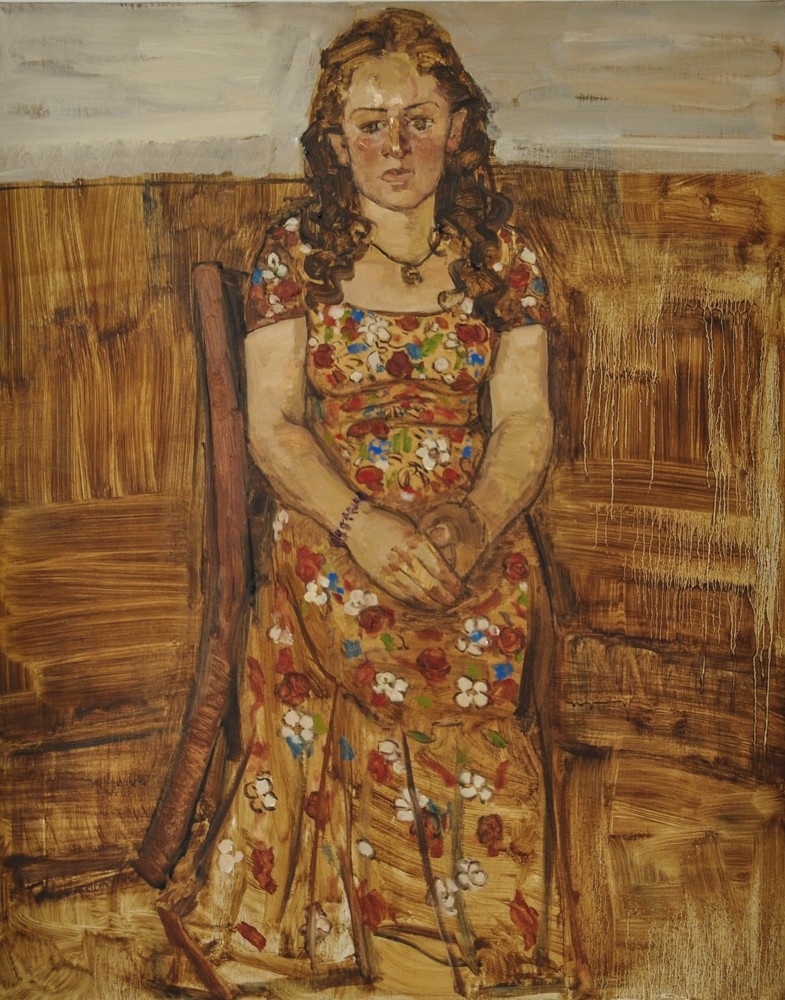
Disguise No.3, Oil on canvas, 100×80cm, 2009
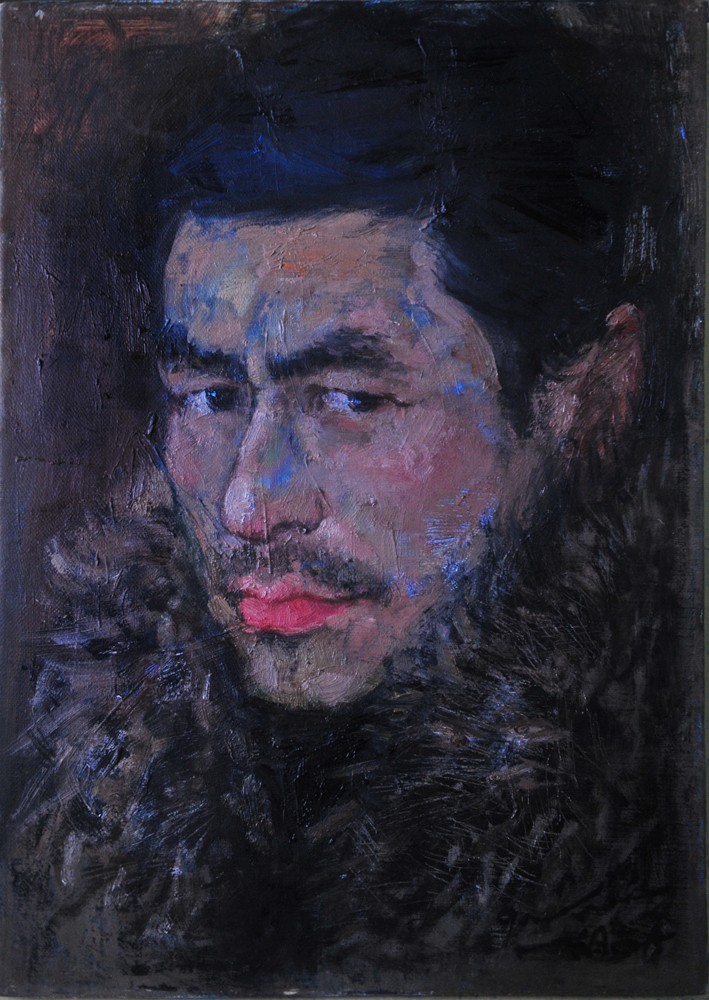
Family, Oil on canvas, 35×25cm, 2013
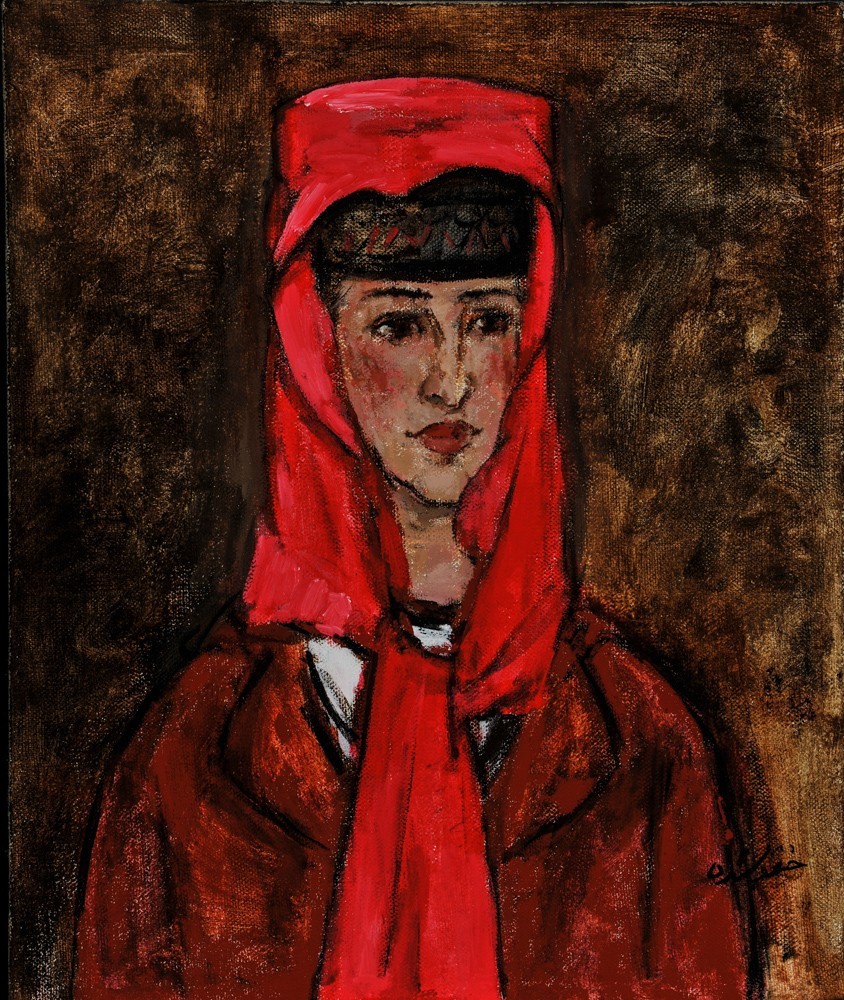
The Gardener, Acrylic on canvas, 60×50cm, 2015
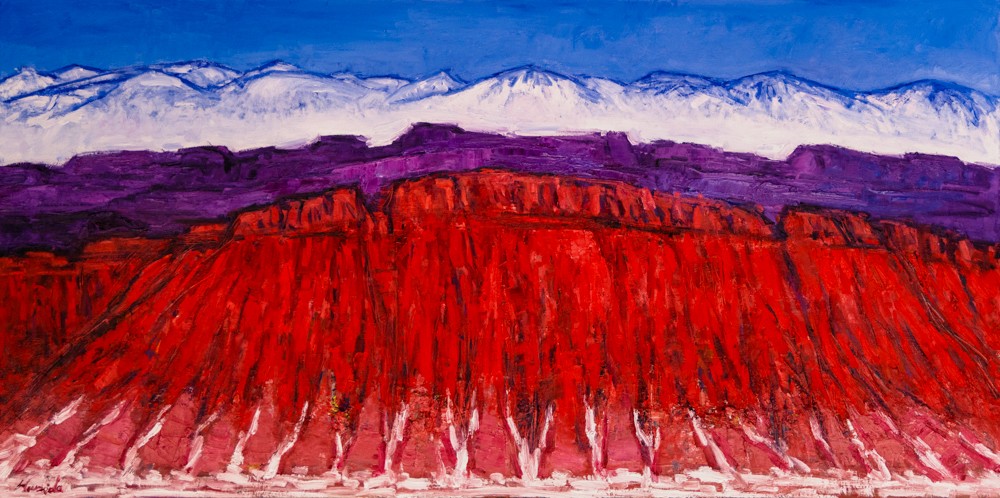
Red Rock, Oil on canvas, 80×160cm, 2021
CAFA ART INFO: How do you reconcile Chinese and Western art in your creations and finally form your own painting appearance?
Hurxida Kerim: Speaking of how to reconcile Chinese and Western art, in fact, I also want to thank my hometown Xinjiang for the resources that it nourished me with. In ancient times, Xinjiang was the only channel for cultural, political, and economic exchanges between the East and the West in Asia and Europe. It was also an important channel for the development and growth of Chinese civilization, and it formed a unique regional culture compatible with China and the West. As a result of the intersection of multiple cultures, the murals in the Qiuci Grottoes provide me with a bridge to reconcile Chinese and Western art. My paintings absorb the general, simple, free and decorative meanings of the murals in Qiuci Grottoes, with full composition, strong colors, clear and flat structures and prominent lines, all of which come from the murals at Qiuci Grottoes. These characteristics coincide with the pursuit of Western modern art.
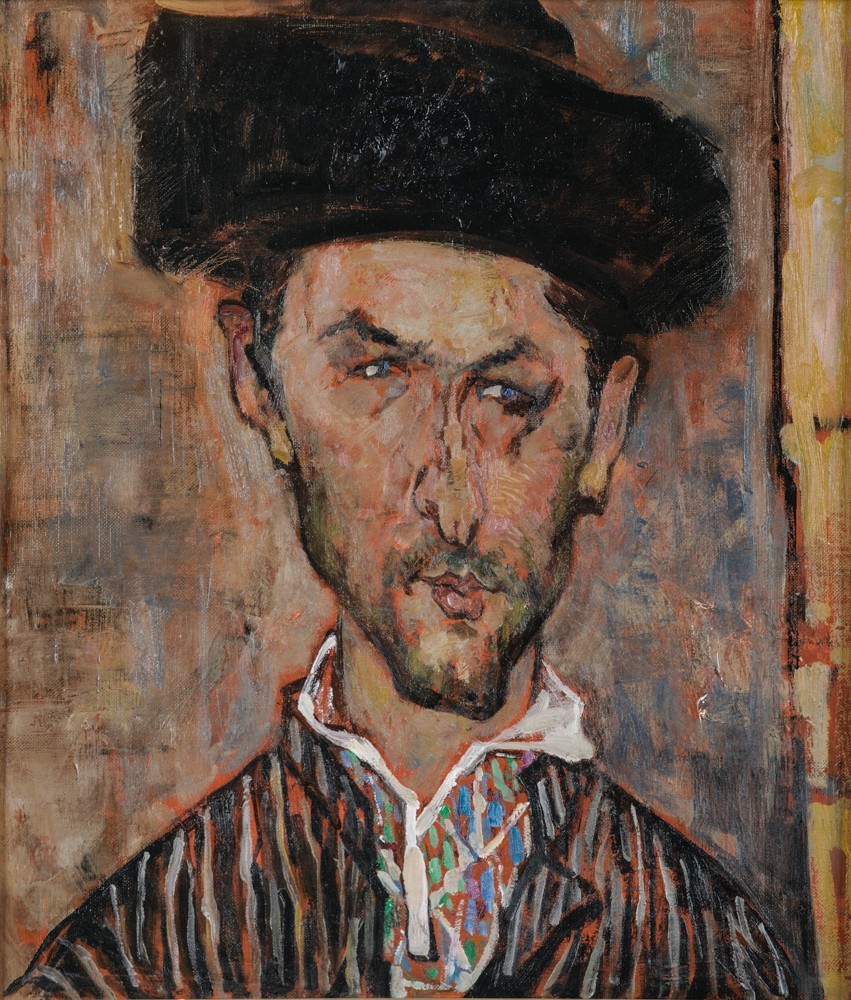
Silence, Oil on Canvas, 53×46cm, 2003

Uncut Jade, Oil on canvas, 60×50cm, 2009
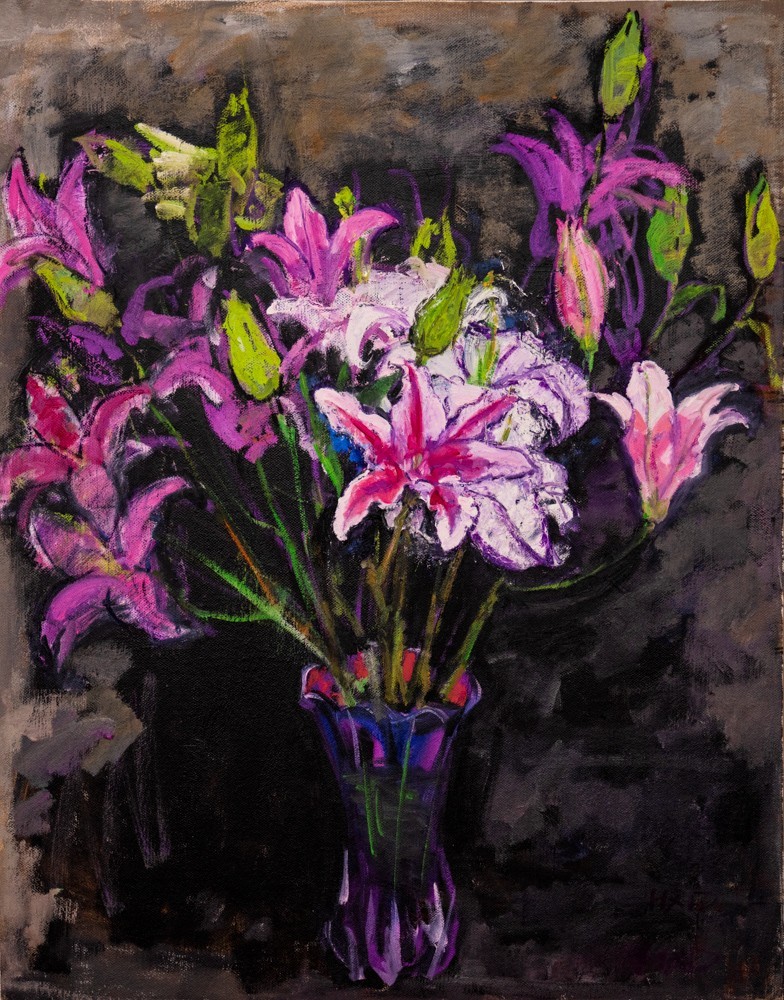
Disguise No. 2, Oil on canvas, 100×80cm, 2019
CAFA ART INFO: You used to pay more attention to themes of your hometown, but your latest creations center around expressions of everyday scenery, presenting contemporary meaning, and bringing more discussion and interpreting space to the images, can you tell us about the changes in your creations or artistic thinking in recent years?
Hurxida Kerim: The changes you mentioned above are actually related to the diversification of my experience and artistic pursuit over the past few years. As the Principal of the High School Affiliated to CAFA, I put a lot of energy into the development of the School, while teaching and being employed in management, thus settling down to paint has become my luxury dream. There is no time to paint too many large-scale themes, so I paint some scenes of daily life, including sketches of flowers and other still life or landscapes. Of course, these are not just sketches, but they also involve creative elements. Now I rarely have the opportunity to live in Xinjiang, and occasionally I can only seize the time to paint a few portraits or landscapes. Because I believe that creation should be based on emotions and experience in life, and I also hope that my creations can be more diversified, so the creations in recent years, whether in terms of themes or styles, are better than those of previous years. All have been enriched and developed.
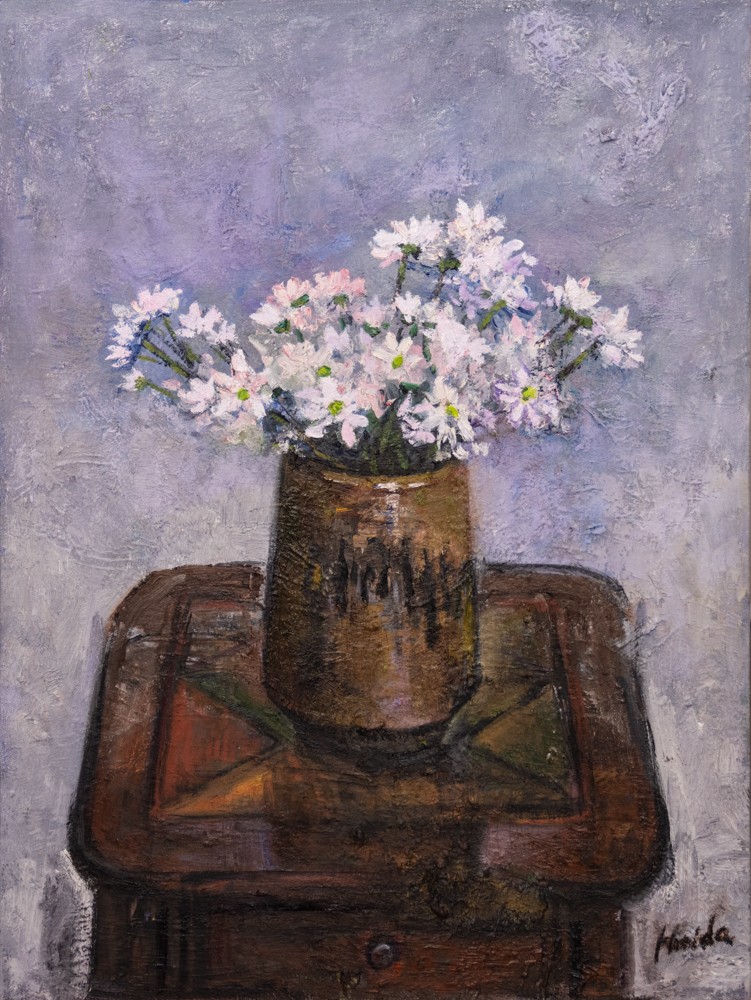
Spring, Oil on canvas, 80×60cm, 2020

Neo, Oil on canvas, 60×80cm, 2021

Lavender, Oil on canvas, 100×80cm, 2021
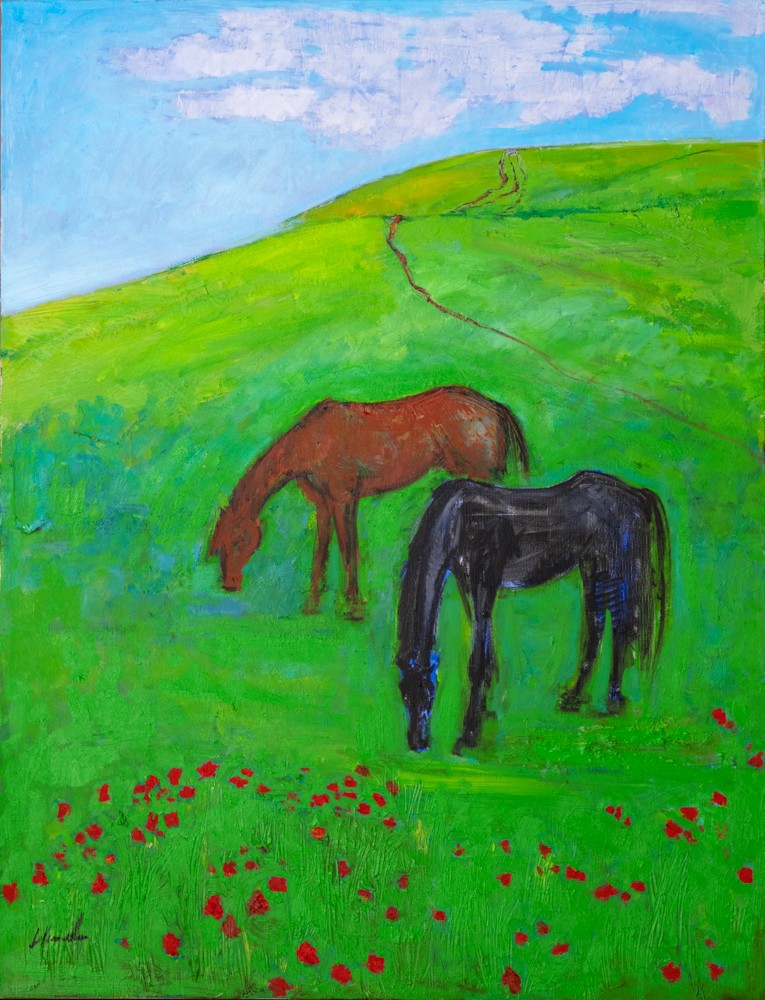
Heavenly Horses, Oil on Canvas, 116×89cm, 2021
CAFA ART INFO: The sales proceeds from this exhibition will be used to help the development of youth aesthetic education. Is this related to your growth experience? As the Principal of the High School Affiliated to CAFA, what are your views and suggestions on the development of aesthetic education for young people?
Hurxida Kerim: General Secretary Xi Jinping’s reply to eight old professors during the 100th anniversary of the establishment of the Central Academy of Fine Arts in 2018 pointed out the direction for the development of aesthetic education in the new era, strengthening the aesthetic education of schools, and enhancing the aesthetic education of society, which has become the current consensus. Aesthetic education is not purely technical training and it should focus on cultivating artistic quality, cultivating the ability to perceive, appreciate, and create beauty, so that it can establish a sound personality, stimulate creativity, and cultivate noble sentiments.
Caring for and promoting the development of young people’s aesthetic education is also the responsibility of an art teacher, because paying attention to the development of young people is paying attention to the future of the country. I grew up in Xinjiang, and my personal experience is that the level of development of aesthetic education across the country is still uneven, especially in the Northwest. However, the northwestern region has a wealth of cultural relics. How to combine the spirit of Chinese aesthetic education with the cultural relics to promote the development of social aesthetic education is worthy of our thinking and action. As the Principal of the High School Attached to CAFA, we have been going to the borders and poor areas for several consecutive years to carry out basic aesthetic educational assistance. During the “100 Sketch Tour of the High School Affiliated to CAFA” in 2019, we sent experts to various places to give lectures on aesthetic education, and in 2022, the tour exhibition for CAFA sketch collection funded by China National Arts Fund, which was applied by CAFA, will also be officially launched, continuing to contribute to the promotion of social aesthetic education.

Female Nude, Oil on canvas, 100×80cm, 2005
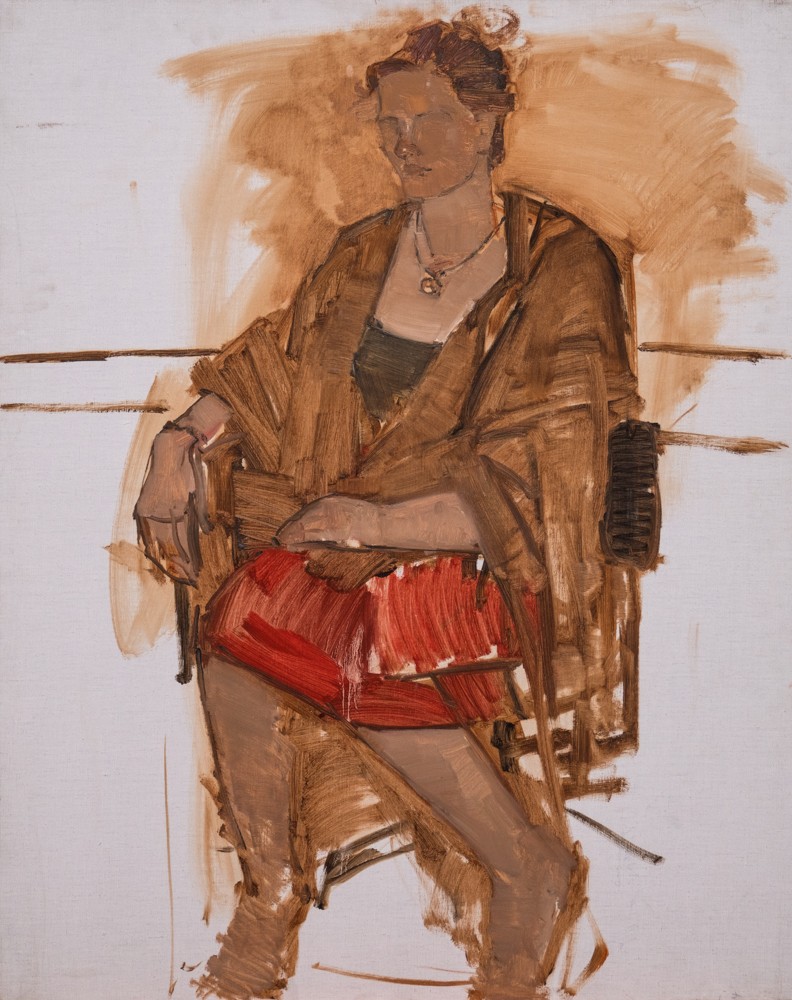
Shawl, Oil on canvas, 100×80cm, 2008
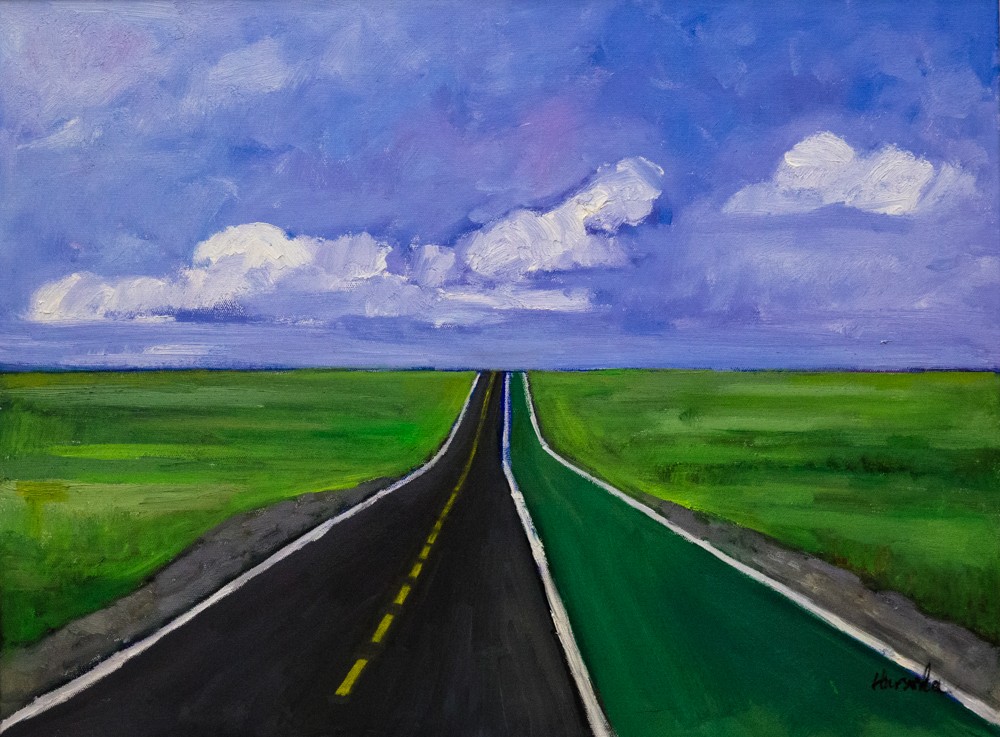
The Road, Oil on canvas, 60×80cm, 2018
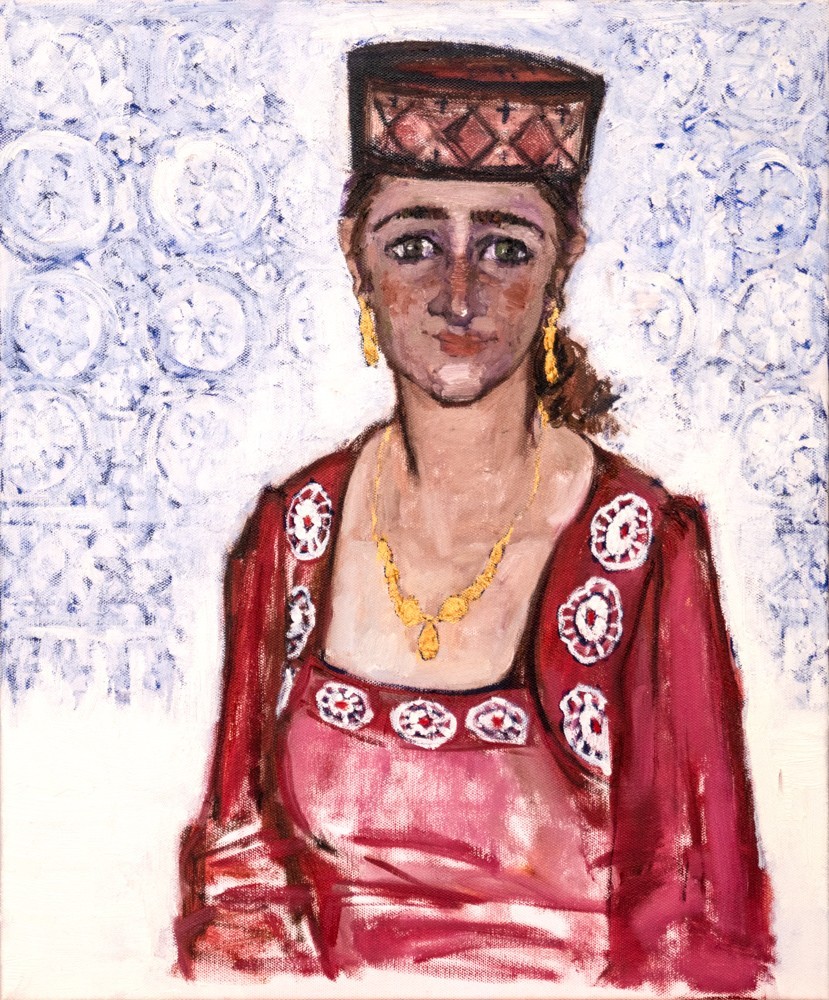
Pamir, Oil on canvas, 60×50cm, 2021
Text edited by Yang Zhonghui and Sue/CAFA ART INFO
Image Courtesy of Hurxida Kerim and Soka Art.




























